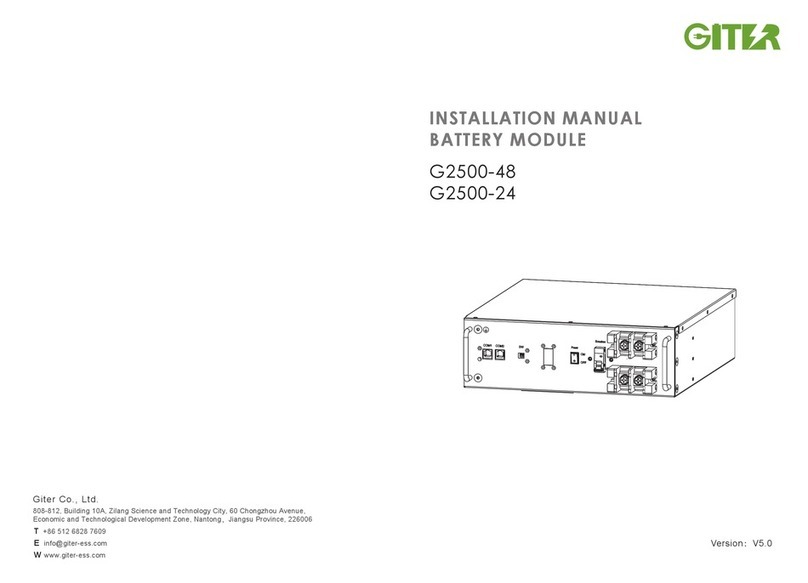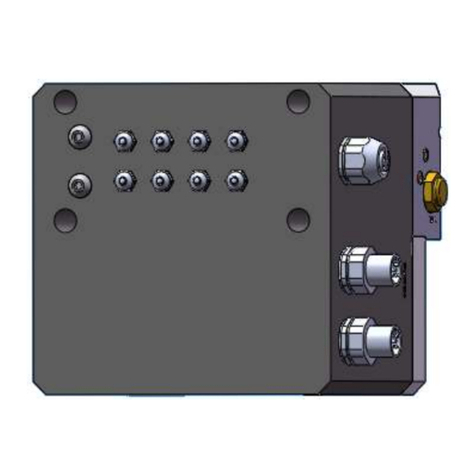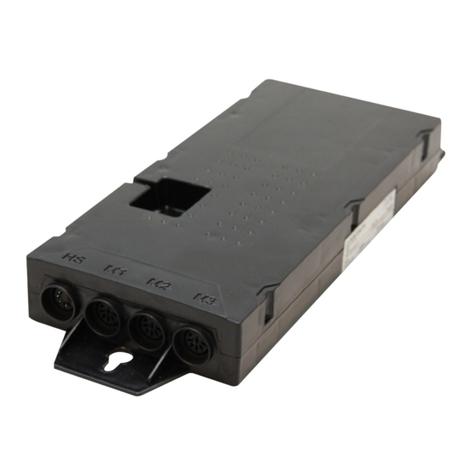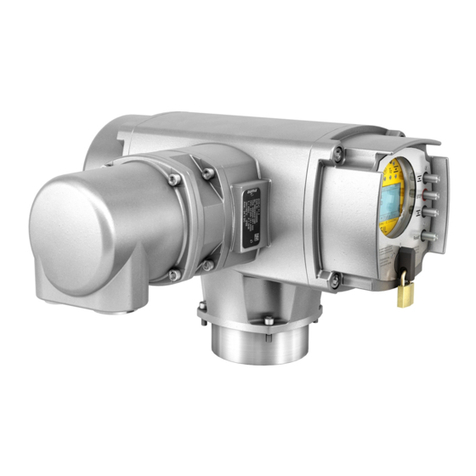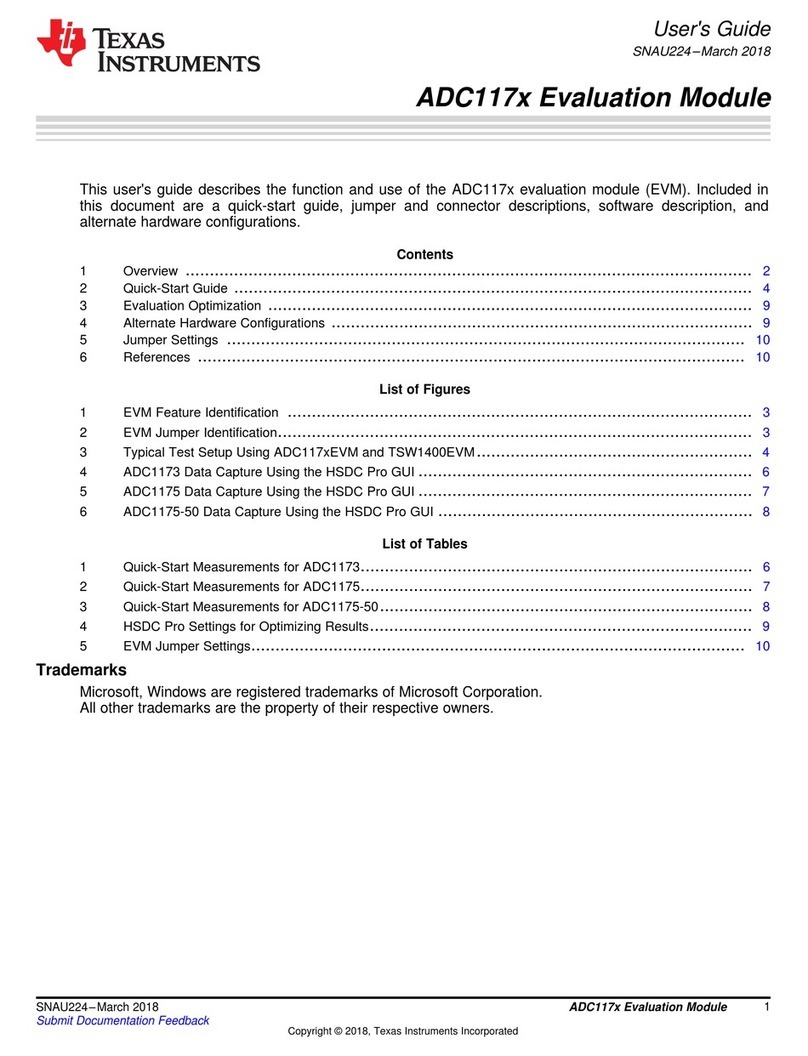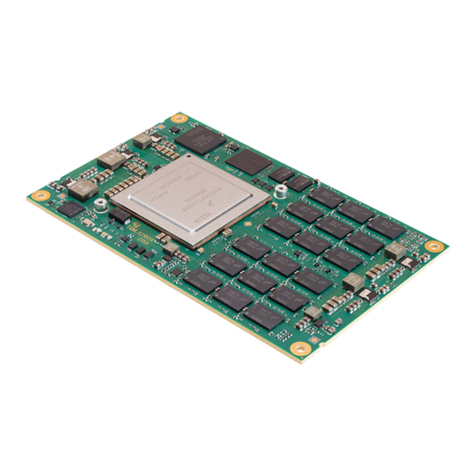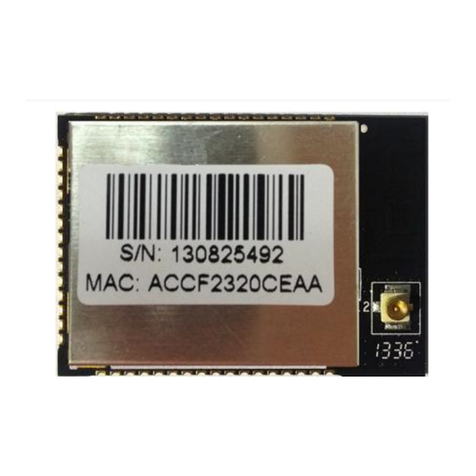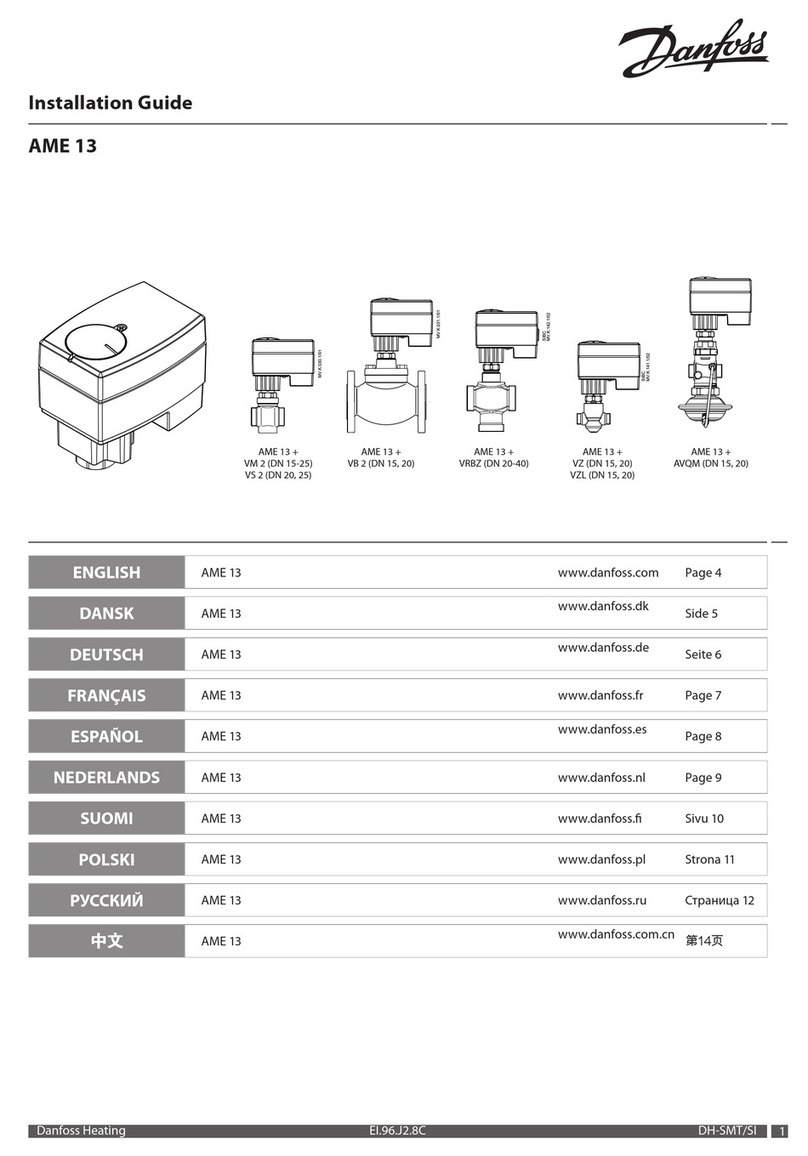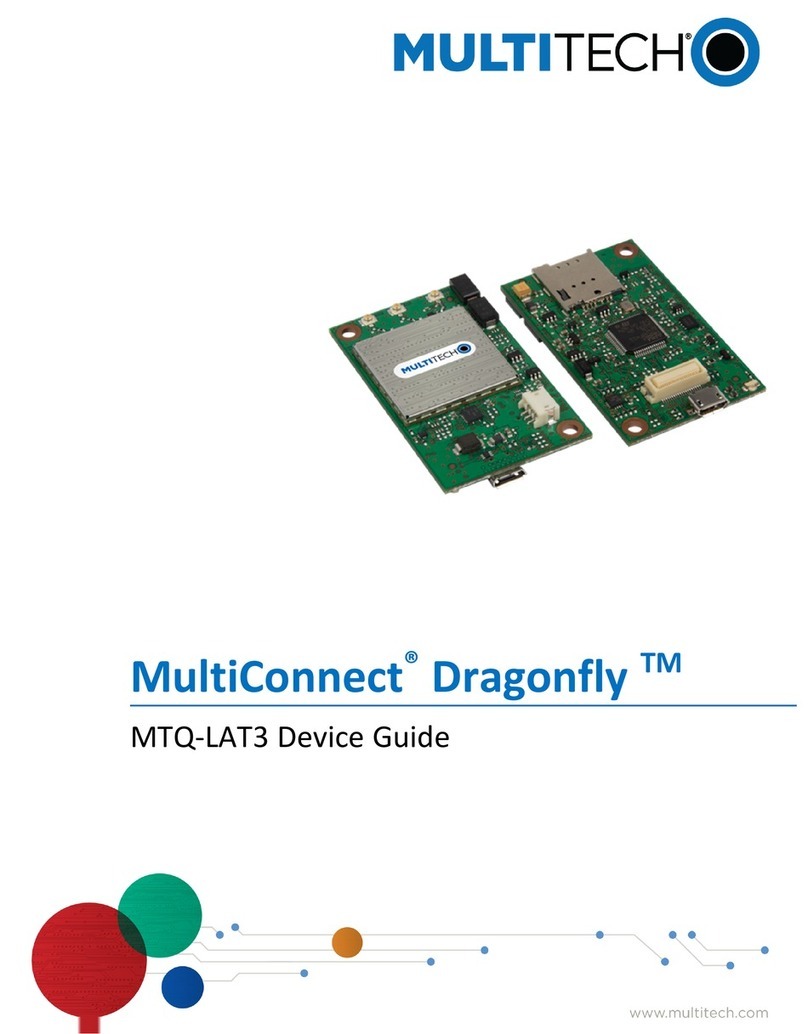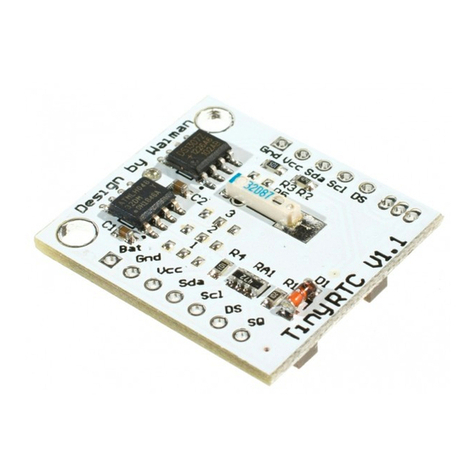GITER G5040-48 User manual

INSTALLATION MANUAL
BATTERY MODULE
G5040-48
Version:V1.0
Giter Co., Ltd.
T+86 512 6828 7609
W www.giter-ess.com
808-812, Building 10A, Zilang Science and Technology City, 60 Chongzhou Avenue,
Economic and Technological Development Zone, Nantong,Jiangsu Province, 226006

Copyright Statement CONTENT
This manual is under the copyright of GITER Co., Ltd, with all rights reserved. Please keep the
manual properly and operate in strict accordance with all safety and operating instructions in this
manual. Please do not operate the system before reading through the manual.
Version Information
Version Date Content
V1.0 20210630 New
1. Introduction
1.1 General Precaution
2. Battery Storage
3. Installation
3.1 Parts List
3.2 G5040-48
3.2.1 Dimensions and Specifications
3.2.2 Interface
3.2.3 LED SOC Display
3.3 Error and Protection Code
3.3.1 Error code
3.3.2 Protection Code
3.4 Limitation of Liability
3.5 Installation of the Battery
3.5.1 Installation Site and Environment
3.5.2 Unpacking the Box
3.5.3 Installation and Wiring
3.5.4 Communication Connection Diagrams
3.5.5 DIP Swtich
4. System Operation
5. Maintenance and Fault Handling
5.1 Routine Maintenance
5.2 Faults and Abnormal Phenomena
5.2.1 Unable to turn on
5.2.2 Shut down immediately after turning on
5.2.3 Unable to charge
5.2.4 Unable to discharge
5.2.5 No communication between battery and upper controller (if any)
5.2.6 Unable to turn off
5.2.7 Status light is always on
6. Specification
01
01
02
02
02
03
03
03
04
04
04
05
05
06
06
06
07
09
10
11
11
11
12
12
12
12
13
13
14
14
14

G5040-48
1. It is strictly prohibited to put the battery in water or fire, so as to avoid ex-plosion or other
dangers and endanger personal safety;
2. Please connect the wires correctly during installation. Do not connect the positive and
negative poles reversed. Do not connect lithium batteries in series;
3. Do not puncture the battery by needling, hammering, trampling or other means;
4. Before installing or removing the equipment, ensure that the power system is not live and
that the battery equipment is turned off;
5. In case of fire, please inform the fire department immediately and use lithi-um battery fire
extinguishers that meet the national regulation to put out the fire;
6. If the battery is improperly lifted or dropped while being removed during transportation, it
can cause personal injury;
7. Do not disassemble any part of the system without permission of the Com-pany or the
technical personnel authorized by the Company, in order to pre-vent danger or injury to your
personal safety, and the equipment failure caused thereby is not covered by the warranty.
During standard operation, no electrolyte shall leak from the battery pack and no toxic gases
shall form. Despite careful construction, if the Battery Pack is damaged or a fault occurs, it
may be caused by electrolyte leakage or the formation of toxic gas .
Do not install the system in any environment of temperature below -10°C or over 50°C and in
which humidity is over 85%.
Do not touch the system with wet hands.
Do not put any heavy objects on top of the system.
Do not damage the system with sharp objects.
Do not install or operate the system in potentially explosive atmospheres or areas with high
humidity.
Do not mount the inverter and the battery pack in areas containing highly flammable materials
or gases.
If moisture has penetrated the system (E.g. due to a damaged enclosure), do not install or
operate the system.
Do not move the system when it is already connected with battery modules.
Use restraint strap fixing the battery to prevent tipping during transporta-tion
The transportation of GTE battery must be made by the manufacturer or an instructed
personal. These instructions shall be recorded and repeated.
A certified NOVEC 1230 and FM-200, or CO2 fire extinguisher with a minimum capacity of 2kg
must be carried。
Don't smoke near the vehicle.
If you want to replace the battery module, please pack it according to new packaging,
dangerous goods and packaging suppliers to receive it.
In case of contact with the electrolyte, flush the affected area with clean water immediately
and consult doctor immediately.
DANGER
WARNING
01 02
2. Battery Storage
3. Installation
3.1 Parts List
Batteries that have been stored for more than 6 months should be recharged be-cause long-term
storage can lead to loss of capacity.
After 12 months of storage at the recommended temperature, the irreversible ca-pacity loss rate of
lithium batteries is 3%~10%, so it is not recommended to store the batteries for a long time without
using them.
It is recommended to charge batteries at least every six months and to charge bat-teries to at least
50% each time.
If the storage time of the battery is more than 6 months, the batteries should be charged to 65~75%.
Check the following parts list and make sure there is no part missing.
1. Introduction
1.1 General Precaution
M5*10 Screws (X2) copper bar(x2)
M4*8 Screws (X12) M6*12 Screws
(x4)
Communication
cable (x1)
PE bag (X1) M6 Buckle nut
(X4)
Hangers
(X2)
Installation manual
(X1)
Carton box (X1)

3.2 G5040-48
In normal condition, LED indicator lights indicates the SOC as the figure below:
03 04
3.2.1 Dimensions and Specifications
3.2.2 Interface
3.2.3 LED SOC Display
3.3 Error and Protection Code
3.3.1 Error code
Item Description Item Description
1
2
3
4
5
6
7
8
9
Earthing Point (with screws)(x2)
Communication Port (x2)
Power Switch
DIP Switch
LED Indicator Lights
Status Light
Battery Negative Port
Battery Positive Port
Battery Circuit Breaker
SOC display
SOC<5%
5%=<SOC<25%
25%=<SOC<50%
50%=<SOC<75%
75%=<SOC<95%
SOC>95%
The indicator lights are all off.
Indicator light 1 is green and always on.
Indicator light 1 and 2 are green and al-ways on.
Indicator light 1 to 3 are green and always on.
Indicator light 1 to 4 are green and al-ways on.
Indicator light 1 to 5 are green and al-ways on.
SOC LED indicator lights
Figure 1 G5040-48 Interface
Note
The number in bracket is reference dimension.
SOC ALM
Error 01
Error 05
Error 07
Error 08
Error 09
Error 10
Error 11
Error 12
Error 13
LED light Error code Description TroubleshootingLED display
Red light
flickers
every 3
seconds.
Temperature
sensor failure
Please restart the bat-tery.
If the problem is not
resolved, please contact
GITER after sales team.
Please keep consist-ence of
DIP switches, then restart
the system.
Please reconnect the
communication cables.
Please contact GITER after
sales team.
Please reconnect the
communication cables
Please contact GITER after
sales team.
After shutting down the
batteries, please restart all
batteries within 30s.
Please turn off the bat-tery
and turn on the bat-tery after
2 hours.
MOSFET error
DIP switch mode
difference
BMS discon-
nect (slave)
SN missing
BMS discon-
nect (master)
Software version
inconsistent
Multi master
MOSFET over
temperature

Modify the product, change the design or replace parts without Giter’s au-thorization;
Non-Giter technicians change or try to repair and erase the serial num-ber ;
The design and installation of the system do not meet the standards and other related
requirements.
Failure to comply with local safety regulations;
Transport damage (Including paint scratches caused by internal movement of the package during
transportation ). A claim should be made directly to shipping or insurance company as soon as the
container/packaging is un-loaded and such damage is identified;
Failure to follow any/all of the user manual, the installation guide and the maintenance regulations;
Improper use or misuse of the device;
Insufficient ventilation of the device;
The maintenance procedures relating to the product have not been followed to an acceptable
standard;
Force majeure (violent or stormy weather, lightning, overvoltage, fire etc.). Damages caused by
any external factors.
05 06
3.3.2 Protection Code:
3.4 Limitation of Liability
3.5 Installation of the Battery
3.5.1 Installation Site and Environment
3.5.2 Unpacking the Box
This manual describes the basic steps of how to install and setting.
The following location are not allowed for installation::
• Sites with humidity above 85%, or where there is condensation;
• Sites which are salty and where humid air can penetrate;
• Flooded areas.
• Earthquake areas –additional safety measures are required;
• Sites with explosive atmosphere;
• Sites with direct sunlight;
• Sites with extreme change of ambient temperature;
• S ites with highly flammable materials or gases;
• Sites with a potentially explosive atmosphere.
• Sites where the altitude is above 2000 m.
Take out the battery from the packing box and check whether the accessories are complete, as
shown in Figure 2.
When the protection code appears, the battery is still in normal working mode. Once the condition
that triggers the protection is removed, the battery will automati-cally resume work.
If the protection code 09 appears in the working mode, please press the power but-ton 5 times
within 10 seconds, the BMS will be forced to turn on the MOSFET of dis-charge so that the inverter
can charge the battery.
Giter does not assume any direct or indirect responsibility for any product damage or property
loss caused by the following conditions.
Figure 2 Unpacking the Battery
1
3
4
5
6
8
9
11
LED light Protection code DescriptionLED display
Green
light
flick-ers
every 3
sec-onds
Temperature difference
High temperature
Discharge in low-temperature
Over-current charge
Over-current discharge
Overvoltage protection
Undervoltage or low SOC protec-tion
Charge in low-temperature

Note
Figure 3 Install the hangers on both sides of the battery
07 08
3.5.3.1 Installation with cabinet
3.5.3.2 Installation with base
3.5.3 Installation and Wiring
The following work should be completed before wiring:
1. Ensure that the power button of all batteries is OFF;
2. Cut off all relevant power supply equipment.
1. The batteries can not be connected in series.
2. Max. 6 batteries can be connected in parallel.;
3. Connect batteries with cooper bar, and the fixed torque is 5N.m
4. Cables used to connect the battery and inverter should at least meet AWG 2, and can also
withstand temperatures above 105℃and DC voltage above 1000V.
5. The grounding resistance should be less than 1Ω.
Note
Only 3 batteries can be installed in a single row.
Step 1: As shown in Figure 3, fix the hangers on both sides of the battery with 10 screws (M4*8)
respectively.(Torque: 1.6 Nm; Tools: T20 screwdriver).
Step 2: As shown in Figure 4, put the battery into the cabinet (connect the grounding wire in
advance). Tighten the screws (M6*12) and fix the cooper bars between the batteries with 2# cross
screwdriver (Torque: 5 Nm).
(Accessories should be purchased separately)
As shown in Figure 5, stack the batteries on the base one by one to ensure that the batteries are
flush in the horizontal and vertical directions; then use M4X12 screws to fix the limit board
(35x100mm) on both sides of the battery (Torque: 1.6Nm; Tool: T20 screwdriver).
Figure 4 Install battery module &
connect cooper bars
Figure 5 Installation with base

09 10
3.5.4 Communication Connection Diagrams
Note
Switch on "1", "2"&"4" when only one battery is connected to the inverter.
The pin definition for external communication is shown in Figure 7.
3.5.5 DIP Switch
RJ45 Pin definition
1
2 CANL
RS485B
RS485A
CANH
3
4
5
6
7
8
As shown in Figure 6 connect the communication cable, and set the DIP switch after the connection.
Switch on "2" &"4" for the first battery (the one closest to the inverter). Switch on "1", "2"&"4" for the
last battery (the one farthest from the inverter) and "4" for all other batteries.
Figure 6 Communication cable
connection & DIP switch
Suitable for Deye Inverter
Suitable for Victron inverter
Figure 7 Pin definition for
external communication

5. Maintenance and Fault Handling
5.1 Routine Maintenance
5.2 Faults and Abnormal Phenomena
5.2.1 Unable to turn on
Common faults and corresponding troubleshooting are listed below.
• Check whether the operating environment of the battery meets the require-ments.
• Check whether the charging and discharging function of the battery is normal. It is necessary to
charge the battery in time when one of the following situations happens:
The protection code 09 appears
The battery is often undercharged
The battery is stored for more than 3 months.
• Check the battery and its appearance, terminals, cables, LED lights, etc.
Fault Troubleshooting Description
Press the Power switch
to "ON" for 2 seconds .
The LED does not light
up within 3 seconds.
Check if there is
resistance when you
press the switch button.
If the button has no
resistance, please contact
customer service.
5.2.3 Unable to charge
Fault Troubleshooting Description
When the battery is not
fully charged and no
protection code or error
code appears in LED
display, the battery cannot
be charged normally.
1.Confirm the battery has
been turned on.
2.Check if the power cables
are connected correctly;
3.Check if the battery
breaker is on;
4.Check if the ambient
temperature is within the
range.
If the battery still cannot
be charged normally after
steps above, please
contact customer service.
5.2.2 Shut down immediately after turning on
Fault Troubleshooting Description
Press the Power switch
to "ON" for 2 seconds .
The LED lights up for
8 seconds and goes
off.
Confirm whether the
switch can bounce back.
If the button cannot
bounce back, please
contact customer service.
11 12
Note
Batteries should be turned on in the correct order to avoid damage.
Turn on: Switch on the battery breaker, press the power switch (rebound button) to "ON" for 1-2
seconds. And the battery module will be turned on and LED indicator lights will light up.
Turn off: Press the power switch (rebound button) to "ON" for 5 seconds, and the battery will be off.
4. System Operation
Check all power cables and communication cables carefully.
Switch On/Off

13 14
5.2.4 Unable to discharge
Fault Troubleshooting Description
When the battery has
power and no protection
code or error code appears
in LED display, the battery
cannot be discharged
normally.
1.Confirm the battery has been
turned on.
2.Check if the power cables are
connected correctly;
3.Check if the battery breaker is
on;
4.Check if the ambient
temperature is within the range.
5. Disconnect the power cables
and test the battery output
voltage.
If the voltage is about 45V,
please charge immediately.
If there is no voltage, please
contact customer service.
If the voltage is normal, restart
the battery.
If the battery still cannot
be discharged normally
after steps above, please
contact customer service.
5.2.5 No communication between battery and upper controller (if any)
Fault Troubleshooting Description
Upper controller failed to
detect the batteries
1. Confirm if the battery has been
turned on;
2. Check if the power cables are
connected correctly;
3. Check if the communication
cables are connected correctly
and whether they are damaged;
4. Check whether the DIP switch
2 of the battery which is from the
upper controller is set to "ON";
5. Restart the batteries.
If the battery still cannot
be used normally after
following the steps, please
contact customer service.
5.2.6 Unable to turn off
Fault Troubleshooting Description
Press the Power switch to
"ON" for 5 seconds . The
LED does not go off.
Check if there is resistance
when you
press the switch button
If the button has no
resistance, please contact
customer service.
5.2.7 Status light is always on
6. Specification
Fault
Items G5040-48
Troubleshooting Description
Status light is always on
and the LED indicator light
is off.
Press the “Power” switch for
more than 5 seconds to
observe the status of light.
If the status light still
keeps on after the steps
above, please contact
customer service.
Nominal Voltage
Nominal charge/ dis-charge current
Charging limit voltage
Discharge limit voltage
Nominal Capacity
Usable Capacity
DoD
Max. Number in parallel per cabinet
Communication Interface
IP Protection
Weight
Operating temperature range
Altitude
Cycles
Certification
48 V
52.5 A
54 V
45 V
5.04 kWh
4.788 kWh
95%
6pcs
RS485/CAN
IP20
40 kg
2000 m
3500
UN38.3
0℃~50℃(Charge)
-10℃~50℃(Discharge)
Table of contents
Other GITER Control Unit manuals
Popular Control Unit manuals by other brands
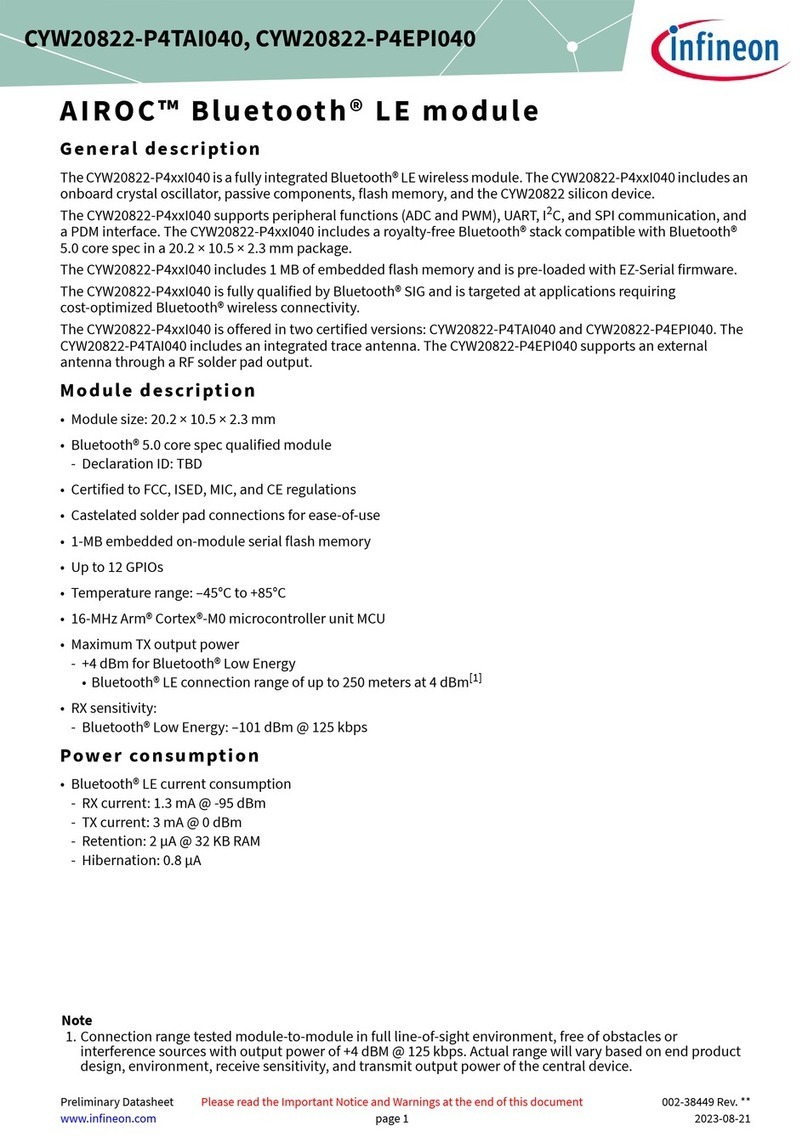
Infineon
Infineon AIROC CYW20822-P4TAI040 manual

Televes
Televes T.OX 563822 Quick installation guide
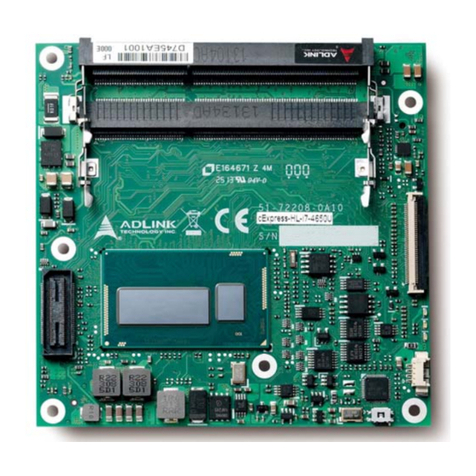
ADLINK Technology
ADLINK Technology cExpress-HL user manual
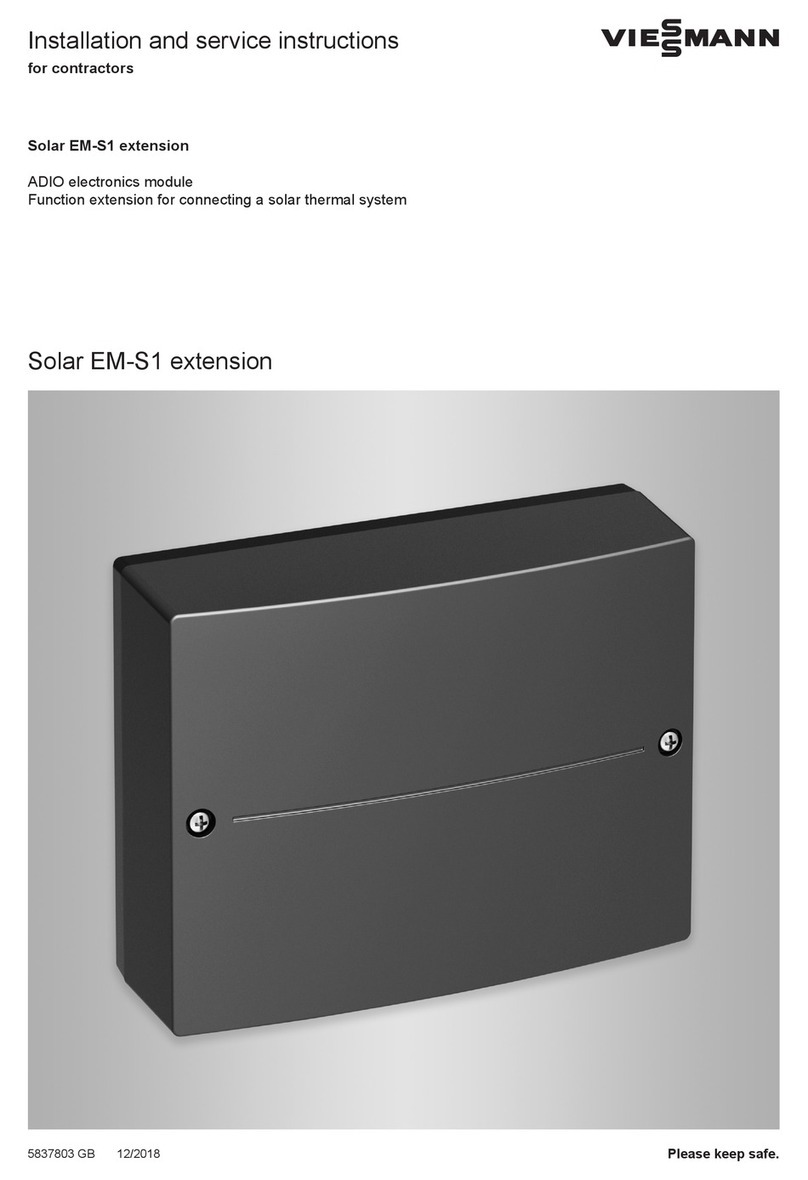
Viessmann
Viessmann EM-S1 Installation and service instructions
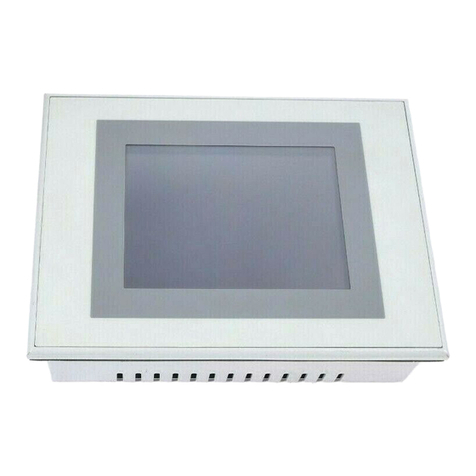
Lenze
Lenze EPM-H505 operating instructions
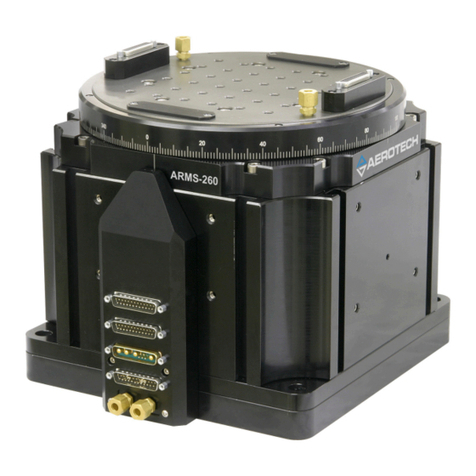
Aerotech
Aerotech ARMS Series Hardware manual
